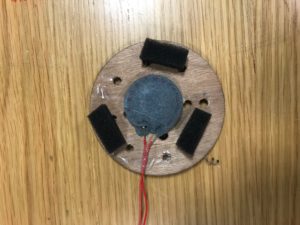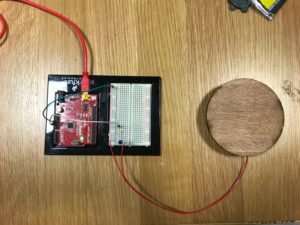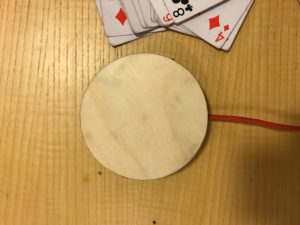I strongly disliked this weeks reading, There Are No Electrons. The author, Kenn Amdahl, begins the book by explaining how he wanted to create a more engaging, memorable textbook by adopting narrative strategies from the likes of Star Wars. This concept, while admirable and even seemingly promising in theory, is executed poorly through the remainder of the assigned chapters. Amdahl constructs a series of long-winded, broken analogies for electrical concepts, centered around the fictional Greenies — small, green humanoids with a love for concerts and parties which drives them into stampedes which power our electrical devices. Most of the content of these stories is absolutely unnecessary, and fails to add any interest to the concepts that Amdahl is trying to convey. Where a simple analogy to a ball rolling down a hill would suffice, he provides a long story about Chuck Berry, rock concerts, and the “need-to-party”. Worse, his focus on disputing electron theory often distracts from the concepts he is trying to express, and is founded on shaky arguments. Near the end of the passage, he claims that he wrote the book because he couldn’t get a current to flow between two batteries. In other places, he seems to criticize parts of electron theory for being unintuitive. His comparison between modern science and the Spanish Inquisition also seems to discount the vast amount of experimental data which has thus far shown to be remarkably consistent with current theories and forms the basis for any belief in them.
Author: Jonah Joughin
Pressure Sensor
For the first week’s homework assignment, I decided I wanted to build a switch that could be used in a variety of ways. Although the examples that we examined in class, such as the mustache switch, were creative, they seemed rather limited and required very precise conditions to operate. In addition, I felt that simply modifying previous examples by simply using a different body part to activate the switch seemed unoriginal. This left me with two primary paths to explore for this project.
- Create a switch that is powered something other than human interaction (e.g. wind, heat, water, etc.).
- Create a more general purpose switch which can be powered by a variety of sources.
I ended up choosing the second of these options, as it opened a broader array of possibilities for interaction, and seemed more conducive to creating a reliable device that wasn’t limited to very narrow parameters.
Following this path, I decided to build a pressure sensor, which would activate a light when pressed down upon. To test the idea, I placed two pieces of copper tape, each connected to a wire, on opposite sides of a piece of fabric containing a hole in the middle. When the wires were pressed, the two strips of copper tape would touch, completing a circuit. When they were released, the switch would open, breaking the circuit.

This early version had several issues, however. The fabric had to be pressed together in a specific place to close the circuit, making it difficult to turn on the light by simply placing an object on top of the switch. To solve this, I built a enclosure around the switch using two pieces of wood that I found in the lab, as well as several pieces of foam. When pressed, the foam compressed and the top piece of wood came into contact with the fabric, activating the switch. However, I found it difficult to keep the wires of the circuit connected to the copper tape in the switch.

To fix this, I built one final version, using metal buttons to clamp the copper tape, fabric, and wires together. I also replaced the wood enclosure with new laser-cut wood parts, and added shrink wrap to make the wires neater.

